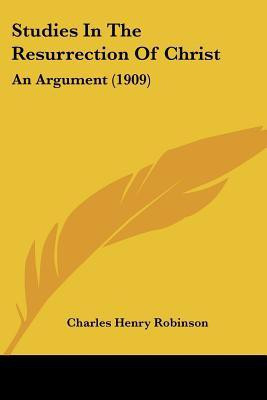Studies In The Resurrection Of Christ(English, Paperback, Robinson Charles Henry)
Quick Overview
Product Price Comparison
Purchase of this book includes free trial access to www.million-books.com where you can read more than a million books for free. This is an OCR edition with typos. Excerpt from book: upon the point it cannot be successfully maintained that the very body which hung upon the cross and was laid in the grave rose again from the dead V In view of the representative character of the writers just quoted it can no longer be maintained that the acceptance of the Christian creed necessarily involves the acceptance of a belief that the resurrection body of Christ was of a physical or material nature, or that the act of resurrection involved a resuscitation of His former body. The general prevalence in the early Church of the contrary view was in part due to the crude conceptions of the nature of matter then entertained, and in part to a natural anxiety to state the doctrine of Christ's Resurrection in terms which would guard converts from any tendency towards doceticism or gnosticism. (c) According to the third theory (which is practically that accepted by Bishop Westcott) the Resurrection of Christ was an objective reality, but was not a physical resuscitation. In support of this view it may be urged that if, as S. Paul argues, Christ was the first-fruits of the Resurrection, and His Resurrection was the pledge and assurance of our own resurrection, the conclusion appears to be obvious that the Resurrection ofthe Son of Man can no more be rightly regarded as material or physical than can the resurrection of all other men. The belief was widespread in early times that the material bodies of Christians would one day be literally resuscitated and would rise from their graves in a form visible to material eyesight. Thus Jerome, arguing from the statement the very hairs of your head are all numbered, held that there would be a restoration of the bones, veins, nerves, teeth and hair. Modern science, by showing that the particles of matter of which our present ...


